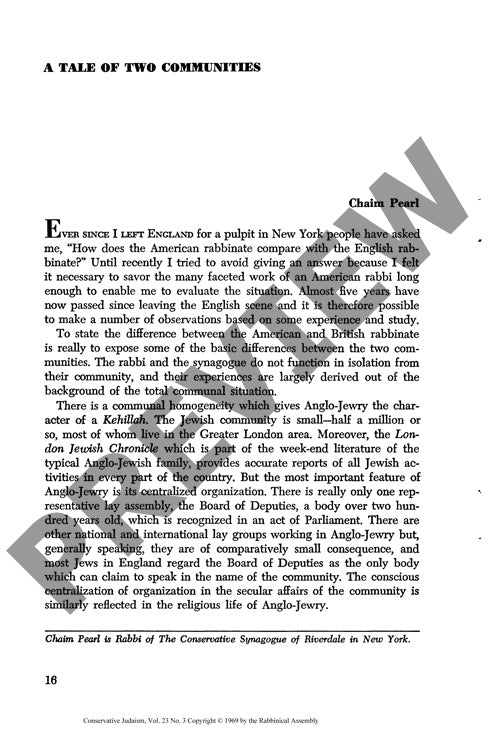A Tale of Two Communities
Couldn't load pickup availability
This comparative study examines the fundamental differences between American and British rabbinates through the lens of communal organization and synagogue structure. Based on the author's five-year experience transitioning from the English to American rabbinate, the research employs ethnographic observation and institutional analysis to contrast the two religious communities. The study reveals that Anglo-Jewry functions as a centralized kehillah with unified organizational structures, exemplified by the United Synagogue's consolidated financial system and standardized rabbinic roles, while American Jewry operates through fragmented, individualistic institutions characterized by organizational chaos and competitive dynamics. Key findings demonstrate that English rabbis benefit from financial security and scholarly autonomy but face severe limitations in religious authority and innovation, functioning primarily as agents of the Beth Din rather than independent decision-makers. Conversely, American rabbis assume multifaceted roles encompassing administrative, educational, and spiritual responsibilities, creating greater workload but enhanced autonomy in religious law and community leadership. The research identifies significant deficiencies in both systems: English synagogues suffer from ritual sterility and educational stagnation due to excessive centralization, while American communities lack disciplinary coherence and standardization. The study concludes that an optimal model would incorporate moderate centralization with local rabbinical authority, balancing organizational efficiency with creative freedom to enhance synagogue vitality and community engagement.

More Information
-
Physical Description
-
Publication Information
Published 1969
ISBN
-
Publication Credits
Chaim Pearl

